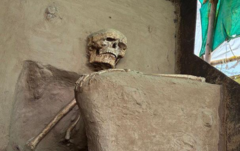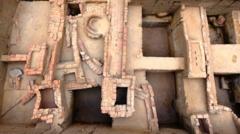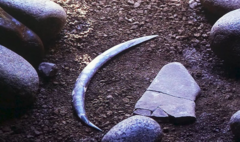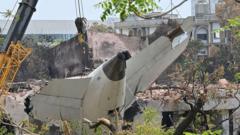Despite its archaeological significance, a skeleton unearthed in Gujarat remains unplaced in a museum and is currently stored in adverse conditions. The delay has been attributed to administrative disagreements between state agencies over ownership and custodianship, underscoring a troubling trend of red tape impacting heritage preservation.
Ancient Indian Skeleton Still Waiting for a Permanent Home Amid Bureaucratic Delays

Ancient Indian Skeleton Still Waiting for a Permanent Home Amid Bureaucratic Delays
A 1,000-year-old skeleton discovered in Gujarat continues to remain unprotected and unexhibited due to ongoing bureaucratic disputes six years after its excavation.
A 1,000-year-old human skeleton that was discovered in Gujarat, India in 2019 is still without a permanent museum home, remaining exposed in a makeshift tent nearly six years later. Archaeologist Abhijit Ambekar unearthed the remains during excavations in Vadnagar, observing that the skeleton was in a unique sitting position, presumed to represent a meditative posture. Such findings are exceedingly rare in India, with parallels seen at only three other archaeological sites.
Despite the skeleton's historical and cultural importance, disagreements over custodianship have led to it being relegated to a tarpaulin shelter near a newly built museum. Ambekar asserts that the skeleton likely dates back to the Solanki period, during which the region flourished under the Chaulukya dynasty from 940 to 1300 CE. He emphasizes that the skeletal find offers invaluable insights into ancient lifestyles and practices, which could significantly enhance our understanding of India’s past.
The Gujarat government's commitment to housing all excavated artifacts in local museums has faltered concerning the skeleton, which, according to officials, remains with the Archaeology Survey of India (ASI). The ASI's director general has not commented on the issue, while state officials work towards transferring the remains to a proper museum facility.
Currently housed without adequate protection, the skeleton remains a local attraction, pulling curious visitors but is at the mercy of environmental exposure. While a massive new Archaeological Experiential Museum is situated nearby, it notably lacks the actual remains, despite showcasing over 5,000 other artifacts from Vadnagar’s storied past.
Vadnagar has historical significance, with human settlements tracing back over 2,000 years. Recent excavations suggest a rich tapestry of cultural history within the region, including Buddhist monasteries and ancient artifacts. According to Ambekar, the skeleton may represent a unique cultural burial practice, often exempting revered figures from cremation through a ritual "samadhi burial."
The recovery of the remains was painstaking, taking two months to carefully extract the fossilized bones from the earth. The skeleton's protection has since drawn concern from locals, with many questioning the efficacy of bureaucratic structures that dictate cultural heritage management.
Community sentiments reflect an urgent desire for preservation actions and museum exhibition, as locals argue that retaining such a valuable archaeological feature outside represents a failure in recognizing and preserving their heritage. Shared sentiments echo across Vadnagar, with residents hoping the skeleton, a symbol of local history, will finally find its rightful place and contribute to the town's potential as a tourist destination.





















